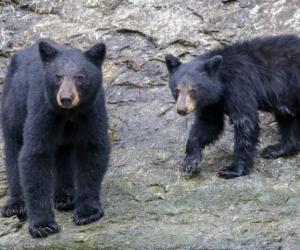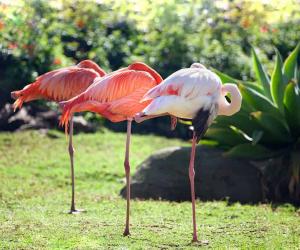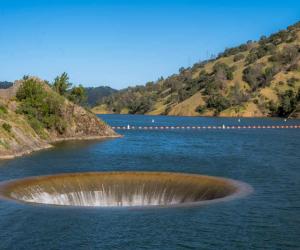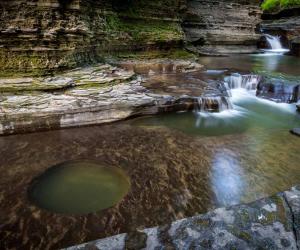Japan Airports Ranked: The Ultimate List of Best-to-Worst Places to Fly
Japan, the Land of the Rising Sun, is a country known for its rich culture, stunning landscapes, and advanced technology. When traveling to this remarkable nation, your journey often begins at one of its airports. Japan boasts a diverse range of airports, from bustling international hubs to quaint regional terminals.
In this article, we will rank Japan’s airports, offering insights into what makes each airport unique, its location, and essential travel tips for a seamless experience.
1. Tokyo Haneda Airport (HND)
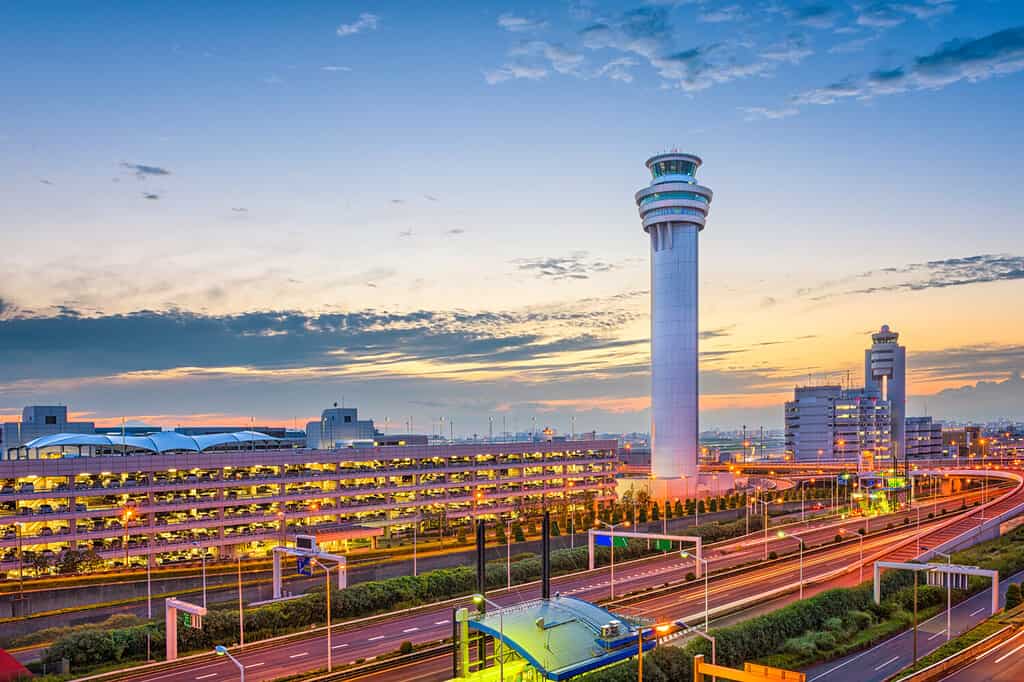
©Sean Pavone/Shutterstock.com
, also known as Tokyo International Airport, is the crown jewel of Japan’s airports. Located just 13 kilometers south of central Tokyo, this airport offers unparalleled convenience.
Why It’s Good:
- Exceptional accessibility to Tokyo’s major attractions.
- World-class amenities, including premium lounges and shopping.
- Punctuality and efficiency are top-notch.
- Voted as one of the world’s cleanest airports.
What Makes It Unique: Haneda Airport’s stunning observation deck provides panoramic views of Tokyo Bay and Mount Fuji.
Location: 13 kilometers south of central Tokyo, Ota City, Tokyo
Travel Tips:
- Consider the monorail for a quick transfer to the city.
- Arrive early to explore the Edo Market inside the airport.
- Make use of the free Wi-Fi for international travelers.
2. Kansai International Airport (KIX)
, situated on an artificial island in Osaka Bay, is a gateway to the vibrant Kansai region.
Why It’s Good:
- Unique island location offers stunning views.
- Excellent transportation connections to Osaka and Kyoto.
- A wide range of shopping and dining options.
What Makes It Unique: KIX’s iconic architecture and seaside runways are a sight to behold.
Why It Can Be Tricky:
- Weather-Related Issues: Kansai Airport is susceptible to typhoons and flooding due to its artificial island location. Such weather events can lead to flight cancellations and delays.
- Limited Public Transport: Compared to Haneda Airport, KIX has less convenient public transport options for reaching Osaka and Kyoto.
- Limited Shopping Choices: While it has improved, KIX still doesn’t offer as wide a variety of shopping options as some other major Japanese airports.
- Long Walks: The airport’s size can require travelers to walk long distances between gates.
Travel Tips:
- Check the before traveling through Kansai Airport.
- Consider booking flights during less typhoon-prone seasons.
- Explore shopping options well in advance of your departure gate.
- Take a walk on the Sky View Observation Hall for breathtaking vistas.
- Plan your shopping at Rinku Premium Outlets, conveniently located nearby.
Location: Izumisano, Osaka Prefecture
3. Chubu Centrair International Airport (NGO)
, often referred to as Centrair, serves the Chubu region, including Nagoya and nearby cities.
Why It’s Good:
- A well-organized and efficient layout.
- Quick customs and immigration procedures.
- Excellent links to Nagoya and beyond.
- Exceptional cleanliness and service.
What Makes It Unique: Centrair boasts a 1,000-square-meter Sky Deck with a rooftop garden.
Location: Tokoname, Aichi Prefecture
Travel Tips:
- Utilize the Sky Town Shopping Center for last-minute gifts.
- Consider a stroll on the Sky Deck during layovers for a breath of fresh air.
- Check the seasonal events calendar for unique cultural experiences.
4. Osaka Itami Airport (ITM)
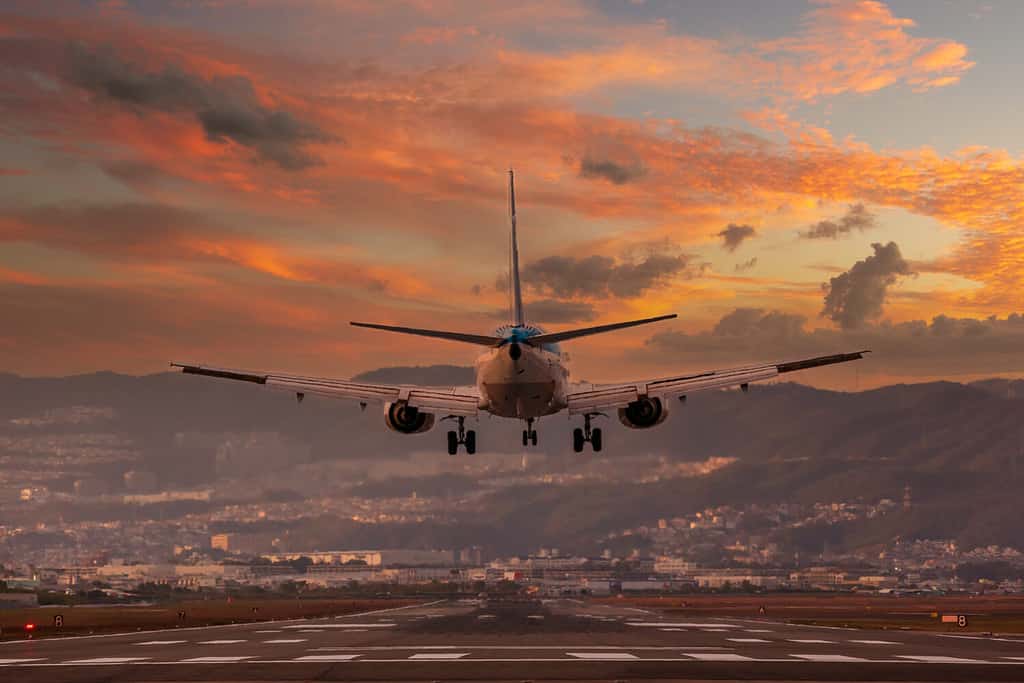
©Nataliya Hora/Shutterstock.com
, also known as Itami Airport, serves domestic flights to and from the Kansai region.
Why It’s Good:
- Conveniently located closer to central Osaka.
- Quick and efficient for domestic travelers.
- Relatively less crowded than KIX.
What Makes It Unique: Itami offers an array of regional Japanese cuisine options.
Location: Itami, Hyogo Prefecture
Travel Tips:
- Try local delicacies like okonomiyaki or takoyaki at the airport.
- Use Itami Airport for domestic travel within Japan.
- Keep in mind that international flights mainly operate from KIX.
5. Fukuoka Airport (FUK)
, located on Kyushu Island, is a vital hub for southern Japan and offers both domestic and international flights.
Why It’s Good:
- Efficient customs and immigration procedures.
- Proximity to Fukuoka City for sightseeing and dining.
- Welcoming and friendly staff.
What Makes It Unique: FUK has a rooftop observation deck with views of departing and arriving aircraft.
Why It Can Be Challenging:
- Limited International Flights: Fukuoka Airport mainly serves domestic flights, so international travelers may need to connect through other airports.
- Language Barrier: Compared to larger international airports, English signage and staff proficiency may be less extensive.
- Limited Amenities: While it’s efficient for domestic travel, FUK may lack the extensive amenities found at larger international airports.
Travel Tips:
- Check flight availability to ensure it meets your travel needs.
- Brush up on basic Japanese phrases or use translation apps.
- Bring your own snacks and entertainment for longer layovers.
- Explore the domestic and international terminals for regional specialties.
- Venture into Fukuoka City for .
- The rooftop deck is a great spot for plane enthusiasts.
Location: Hakata-ku, Fukuoka City, Fukuoka Prefecture
6. Narita International Airport (NRT)
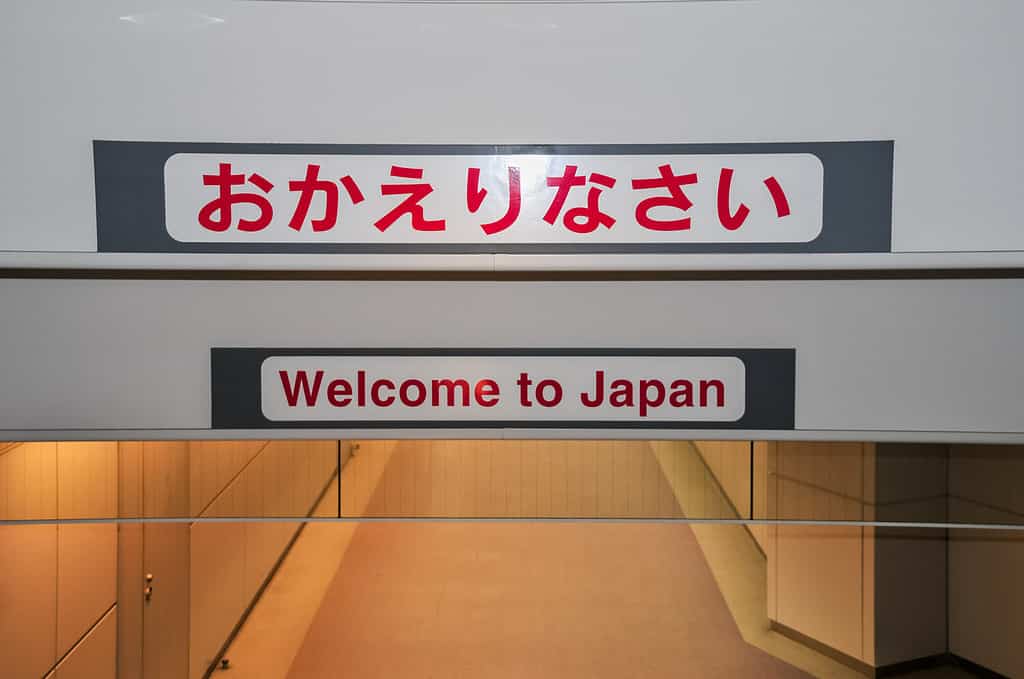
©Felix Lipov/Shutterstock.com
, situated east of Tokyo, is one of Japan’s primary international gateways.
Why It’s Good:
- Extensive global flight connections.
- Efficient customs and immigration processes.
- Good public transportation links to Tokyo.
What Makes It Unique: NRT offers a wide range of Japanese cultural experiences in the airport.
Why It’s Challenging:
- Distance from Tokyo: Narita Airport is located quite far from central Tokyo, which can lead to longer commute times and potential transportation hassles.
- Crowds and Delays: This airport can get exceptionally crowded, especially during peak hours, leading to longer check-in and security lines.
- Limited Dining Options: While it has improved over the years, Narita still lags behind some other airports in terms of dining choices, especially for international travelers.
- Complex Layout: With multiple terminals and sometimes confusing signage, navigating Narita can be challenging for first-time visitors.
Travel Tips:
- Allow extra time for transportation to and from Narita.
- Check for alternatives like Haneda Airport for domestic flights.
- Consider using airport lounges to escape the crowds.
- Allow ample time for customs and immigration clearance.
- Explore the airport’s traditional cultural exhibitions and performances.
- Consider taking the Narita Express train to central Tokyo.
Location: Narita, Chiba Prefecture
7. Hiroshima Airport (HIJ)
, located in Mihara City, Hiroshima Prefecture, serves both domestic and limited international flights.
Why It’s Good:
- Quick and hassle-free security checks.
- Proximity to Hiroshima’s historic sites.
- Friendly and welcoming staff.
What Makes It Unique: HIJ features a Peace Memorial Park within the terminal.
Why It Can Be Challenging:
- Limited International Connectivity: Hiroshima Airport primarily serves domestic flights, making it less suitable for international travelers.
- Smaller Terminal: The airport is relatively small and may not have as many amenities as larger airports.
- Potential Weather Issues: Hiroshima, like other airports in Japan, can be affected by typhoons or adverse weather conditions, leading to delays or cancellations.
Travel Tips:
- Verify the availability of international flights if that’s your intended destination.
- Check the weather forecast if traveling during typhoon seasons.
- Make use of nearby attractions, like the Peace Memorial Park, during layovers.
- Explore the Peace Memorial Park if you have a layover.
- Sample Hiroshima’s famous okonomiyaki at the airport.
- Check for limited international flight options.
Location: Mihara City, Hiroshima Prefecture
8. Sendai Airport (SDJ)
, located in Natori City, Miyagi Prefecture, serves the Tohoku region with domestic and international flights.
Why It’s Good:
- Compact and easy-to-navigate terminal.
- Convenient access to Sendai City.
- Timely and efficient services.
What Makes It Unique: SDJ is surrounded by lush greenery, providing a serene atmosphere.
Location: Natori City, Miyagi Prefecture
Travel Tips:
- Enjoy regional cuisine such as gyutan (grilled beef tongue).
- Take a stroll around the airport’s beautiful garden.
- Use Sendai Airport as a gateway to explore Tohoku’s scenic landscapes.
9. New Chitose Airport (CTS)
, located near Sapporo, Hokkaido, is Japan’s gateway to the northernmost island.
Why It’s Good:
- Modern and efficient facilities.
- Access to Hokkaido’s stunning natural attractions.
- Rich variety of Hokkaido’s gourmet offerings.
What Makes It Unique: CTS boasts a replica of the famous Sapporo Clock Tower.
Why It Can Be Challenging:
- Seasonal Weather Challenges: Hokkaido’s winter weather can lead to flight delays and cancellations during the snowy season.
- Crowded During Peak Times: CTS can get crowded during popular tourist seasons, leading to longer lines and wait times.
- Limited International Flights: While it offers international flights, CTS primarily serves domestic routes.
Travel Tips:
- Plan your trip to Hokkaido during milder weather if possible.
- Allow extra time during peak travel periods.
- Consider using New Chitose Airport for international travel.
- Sample Hokkaido’s renowned seafood at the airport’s restaurants.
- Explore the shopping street for local souvenirs.
- Book a direct flight to enjoy the beauty of Hokkaido.
Location: Chitose, Hokkaido
10. Naha Airport (OKA)
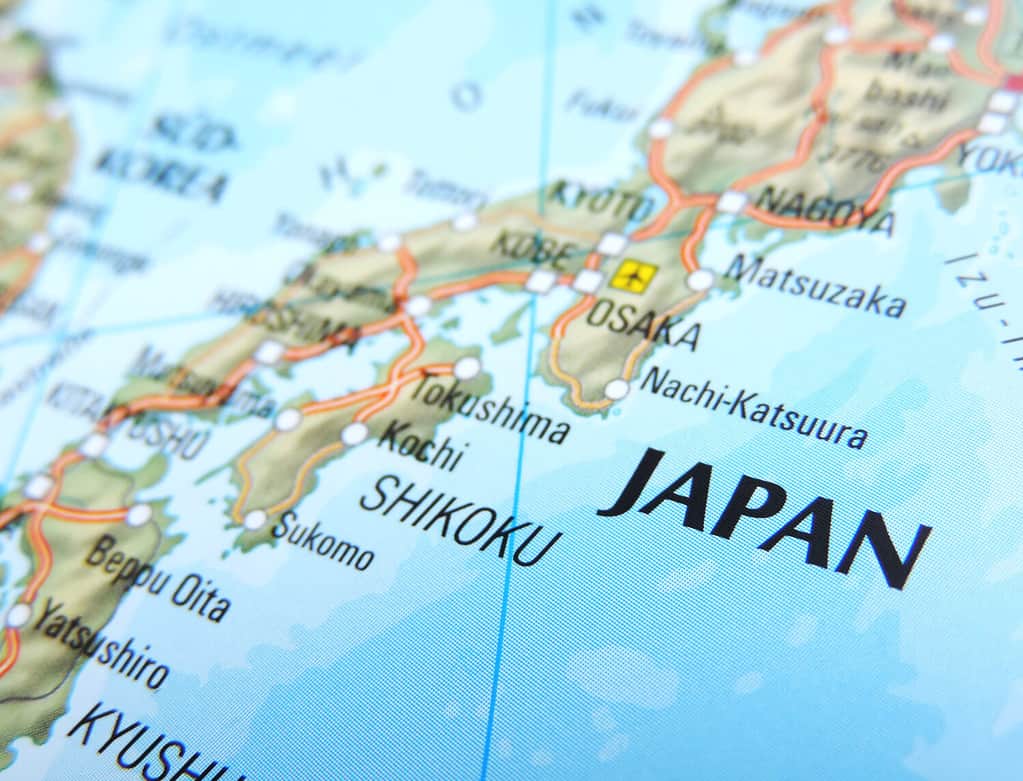
©Eivaisla/Shutterstock.com
, located in Okinawa, is a vital gateway to Japan’s tropical paradise.
Why It’s Good:
- Easygoing and relaxed atmosphere.
- Access to Okinawa’s beautiful beaches.
- Traditional Okinawan culture on display.
What Makes It Unique: OKA showcases Ryukyuan culture with traditional dance performances.
Location: Naha, Okinawa
Travel Tips:
- Taste Okinawan cuisine like goya champuru and soki soba.
- Explore the Okinawa World theme park adjacent to the airport.
- Book well in advance during peak tourist seasons.
11. Kagoshima Airport (KOJ)
, also known as KOJ, serves the southern Kyushu region.
Why It’s Good:
- Compact and efficient layout.
- Gateway to the beautiful Kagoshima Prefecture.
- Friendly and welcoming staff.
What Makes It Unique: KOJ provides stunning views of Sakurajima volcano across the bay.
Location: Kirishima, Kagoshima Prefecture
Travel Tips:
- Don’t miss Kagoshima’s famous black pork cuisine.
- Visit Sakurajima for a unique volcanic experience.
- KOJ is well-suited for exploring southern Kyushu.
12. Chitose Airport (CTS)
, not to be confused with New Chitose Airport in Hokkaido, serves domestic flights to and from Hokkaido’s Sapporo region.
Why It’s Good:
- Easy access to Sapporo and Hokkaido’s winter sports destinations.
- Efficient for domestic travelers.
What Makes It Unique: Chitose showcases Hokkaido’s winter charm with snow festival displays.
Location: Chitose, Hokkaido
Travel Tips:
- Sample Hokkaido’s famous ramen at the airport.
- Plan your visit during the Sapporo Snow Festival for a magical experience.
- Opt for New Chitose Airport for international flights.
13. Miyazaki Airport (KMI)
, located in Miyazaki City, serves the southern Kyushu region.
Why It’s Good:
- A small, hassle-free terminal.
- Convenient access to Kyushu’s lush nature and coastline.
- Friendly and welcoming staff.
What Makes It Unique: KMI is known for its palm trees and tropical atmosphere.
Location: Miyazaki City, Miyazaki Prefecture
Travel Tips:
- Try regional delicacies like chicken nanban and Miyazaki beef.
- Explore the nearby beautiful Aoshima Island.
- Enjoy a laid-back atmosphere with shorter queues.
14. Tokyo Narita Airport (NRT)
, often confused with Narita International Airport, serves as a secondary international gateway for the Tokyo area.
Why It’s Good:
- Extensive international flight options.
- Efficient customs and immigration processes.
- Good transportation links to Tokyo.
What Makes It Unique: Narita Airport is a hub for many Japanese carriers and international airlines.
Location: Narita, Chiba Prefecture
Travel Tips:
- Check your terminal and airline carefully, as NRT has multiple terminals.
- Allow sufficient time for customs and security checks.
- Use the Narita Express train or buses for Tokyo transfers.
15. Kumamoto Airport (KMJ)
, located in Mashiki Town, Kumamoto Prefecture, serves domestic and limited international flights.
Why It’s Good:
- A smaller and more manageable terminal.
- Access to Kumamoto’s historic sites and natural beauty.
- Helpful and friendly staff.
What Makes It Unique: KMJ features a beautiful Japanese garden inside the terminal.
Location: Mashiki Town, Kumamoto Prefecture
Travel Tips:
- Savor Kumamoto’s famous Basashi ( sashimi) at the airport.
- Explore Kumamoto Castle and Aso Volcano during your visit.
- Enjoy a relaxed and uncrowded airport experience.
Japan’s airports offer a diverse range of experiences, from the bustling international hubs of Tokyo to the charming regional terminals of Kumamoto.
While Tokyo Haneda Airport, Kansai International Airport, and Chubu Centrair International Airport top the list for their efficiency and amenities, each airport in Japan has its unique charm and convenience.
While there isn’t a definitive “worst” airport in Japan, as experiences can vary depending on individual preferences and circumstances, some travelers have reported less favorable experiences at certain airports. Among these, Tokyo Narita Airport (NRT) is often mentioned due to its distance from central Tokyo, potential crowding, and the complexity of navigating its multiple terminals. However, it’s important to note that Narita Airport still provides essential services and meets international safety standards.
Ultimately, whether an airport is considered the “worst” can be subjective and depend on factors like personal preferences, travel needs, and the purpose of the trip. Travelers may choose airports that align with their specific itineraries, flight options, and destinations to have a more convenient and enjoyable experience.
It’s essential to remember that the “challenges” mentioned here are relative, and many travelers have had perfectly pleasant experiences at these airports. However, being aware of potential issues and planning accordingly can help travelers make the most of their journey through these airports in Japan.
When traveling through Japan’s airports, remember to plan ahead, explore the cultural offerings, and indulge in regional cuisine. Whether you’re embarking on a journey to explore ancient temples or enjoying a tropical paradise in Okinawa, Japan’s airports are the gateway to a memorable adventure in the Land of the Rising Sun.
